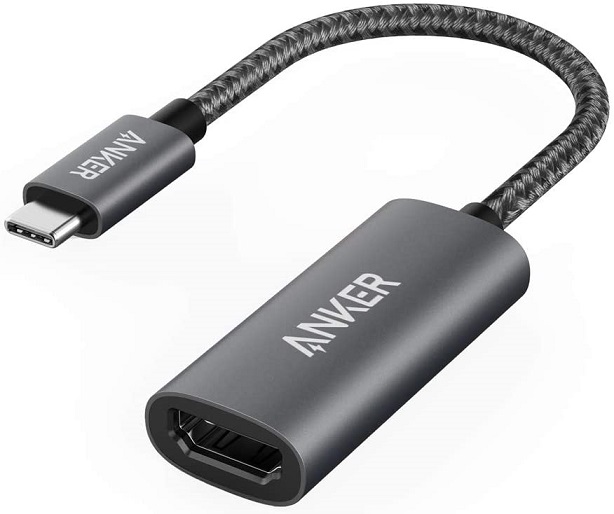Remember those large and chunky serial and parallel ports at the back of your desktop? Back in the day, we connected external peripherals and devices such as printers, mice, joystick, modems, etc. using these ports.
Where are they now? USB ate them away. Jokes aside, USB actually replaced all the individual peripheral connect ports, with just one port.
USB is short for Universal Serial Bus. It is an interface using which you can connect peripheral devices, accessories, and many more.
USB Implementers Forum (USB-IF) is responsible for releasing and maintaining all the standards. Speaking of standards, there are four generations of USB:
- USB 1.x
- USB 2.0
- USB 3.x
- USB 4
When we say USB, it is actually a combination of ports, connectors, and cables. USB Ports are usually present on the host devices such as computers, laptops, and Smartphones.
Coming to USB Connectors, you can find them on peripheral devices such as a mouse, keyboard, external hard disk, cameras, flash drives, and many more.
There are different types of USB Ports and corresponding connectors. Some of them are:
- USB Type A
- USB Type B
- Mini USB
- Micro USB
- USB Type C
Nowadays, USB Type C, or simply USB C is becoming the go-to connector for:
- Smartphones
- Laptops
- Monitors
- Hard Drives
- Flash Drives
- Cameras
- Charging (power delivery)
Outline
ToggleA Brief Note on HDMI
HDMI is short for High-Definition Multimedia Interface. Using HDMI, you can transmit video and/or audio from a source such as a computer, smartphone, camera, etc., to a display device such as a monitor, TV, projector, etc.
Several large media and electronics companies (Hitachi, Sony, Toshiba, Panasonic, Philips, etc.) are the founders of HDMI. Later, the original founders created HDMI Forum to make it an open organization so that many other companies can be a part of the development.
Over the years, there are several versions of HDMI. The main HDMI versions are:
- HDMI 1.0
- HDMI 1.2
- HDMI 1.4b
- HDMI 2.0
- HDMI 2.0b
- HDMI 2.1
The latest iteration of HDMI is HDMI 2.1. It supports 4K @ 120 Hz and even 8K @ 120Hz. Apart from uncompressed video, HDMI can also transmit uncompressed audio.
You can use HDMI to transmit Dolby Atmos and DTS:X, which are two popular multi-channel surround sound formats currently.
So, where can we find HDMI? Almost all desktop computers, graphics cards, and laptops have HDMI Ports. HDMI Ports are also common in cameras and set-top boxes.
Gaming consoles such as XBOX and PS5 also have HDMI Ports. All these are ‘Source’ devices.
Using these ports, you can transmit high-bit rate, uncompressed video, and audio signals.
Coming to the other end, on the display side, we have HDMI Ports on TVs, Monitors, and Projectors. Soundbars and surround sound systems also have HDMI ports.
Most of the Home Media consumption is carried out using HDMI. AV Receivers have several HDMI Ports to connect to many input or source devices and switch between them depending on your requirement.
Can USB Port be Converted to HDMI?
Now, coming to the important question, Can USB Port be converted to HDMI? Before answering this question, let us quickly understand the need to convert USB Port to HDMI.
As we said earlier, almost all computers (desktops or laptops) have HDMI Ports so that we can video out the contents onto a display. What if there aren’t any HDMI Ports?
You might find this absurd but take a look at some ultrabooks. They are very slim and most definitely skip on an HDMI Port. Another example is MacBook, particularly MacBook Air variants.
All these devices don’t have an HDMI Port. So how do you take the video out from these devices?
As All the devices definitely have USB Ports, most users get the question, can USB port be converted to HDMI?
The answer is, yes. But with a catch. You need a special USB to HDMI adapter or converter.
How to Use a USB to HDMI Adapter?
A USB to HDMI Adapter is a tiny device that enables video out on USB Ports of laptops or desktops. Using this adapter, you can mirror the contents of a laptop or use it to extend the display (add a second display).
Using a USB to HDMI Adapter is very easy. Most USB to HDMI Adapters have two connections. On the USB side, you get a USB 3.0 Type A Connector.
Just plug this connector into any of the USB Ports on your computer. Now coming to the HDMI side, you get a female HDMI Port (mostly). Using an HDMI male-to-male cable, you can connect this port to a display device (TV or Monitor).
Nowadays, you can get USB Type C to HDMI Adapters as well. The benefit of this adapter is that you can use it with laptops as well as smartphones with a USB Type C Port.
Conclusion
USB and HDMI are two popular ports on computers. While USB is suitable for connecting external devices and peripherals, HDMI is useful for transmitting video and audio signals from computers to display and sound devices.
Some thin and Ultrabooks don’t come with HDMI Ports. So, many Ultrabook users have a doubt, can USB Ports be converted to HDMI? As USB ports (either USB Type A or USB Type C) are definitely available on all devices, there are special devices that convert USB to HDMI.
We call them USB to HDMI Adapters or Converters. They are very affordable devices (between $10 to $20). You can use them to convert any USB Port on computers or smartphones to HDMI.


